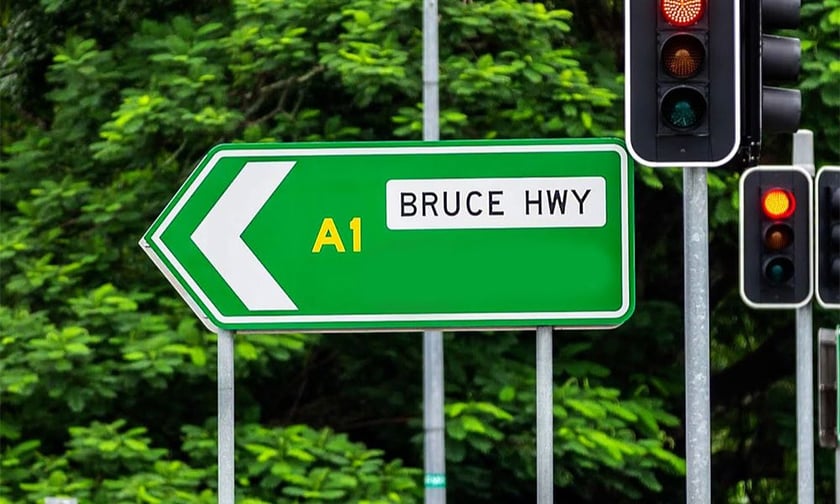

RACQ has teamed up with key organisations in Queensland to advocate for critical upgrades to the Bruce Highway.
The club noted recent data showing that the highway’s fatal and serious injury (FSI) crash rate is significantly higher than major highways in New South Wales and Victoria.
Ahead of the state election in October, RACQ – along with the Local Government Association of Queensland (LGAQ), Queensland Farmers Federation (QFF), Royal Australasian College of Surgeons (RACS Qld), Queensland Trucking Association (QTA), and Queensland Tourism Industry Council (QTIC) – is urging political parties to commit to a 10-year funding plan with the federal government.
The goal is to eliminate all two-star sections of the Bruce Highway.
“We need a 10-year funding commitment from the state and federal governments to continue upgrading the Bruce Highway by widening narrow sections and bridges, installing more overtaking lanes, and progressively duplicating the road to a dual carriageway standard, like the Hume and Pacific Highways in NSW and Victoria,” said RACQ managing director and CEO David Carter.
The club’s analysis of AusRAP crash data from 2018 to 2022 indicated that upgrades, such as the installation of dual carriageways on the Hume and Pacific Highways, have nearly eradicated head-on crash risks. Head-on collisions represent a significant portion (81) of the fatalities on the Bruce Highway.
In comparison, 1,398 kilometres of the Bruce Highway, stretching from Gympie to Cairns, remains single-lane and undivided. This section has an average FSI crash rate three times higher than rural sections of the Pacific Highway and five times higher than those on the Hume Highway.
Carter stressed the importance of upgrading the highway.
“The Bruce Highway is the backbone of this state, it’s supposed to be a national highway but when you compare it to the Pacific or Hume, it’s substandard,” he said. “Those interstate highways have rightfully been upgraded to three, four, and five stars out of five for infrastructure safety, yet around half of the Bruce is still a poor two-star rating. In 2024, there is no way Queensland should have any two-star sections on the Bruce Highway.”
RACQ and the other organisations are also pushing for a return to the previous 80-20 federal-state funding split for the highway’s improvements. They are seeking commitments for a delegation to Canberra in November to secure this funding arrangement.
LGAQ CEO Alison Smith highlighted the need for safe and reliable transport for communities.
“As the level of government closest to their communities, councils see the huge emotional toll that crash deaths and injuries create, even before you come to the economic cost,” she said. “Ensuring more funding flows to improve road safety across our decentralised state is critical to Queensland councils because it is critical to improving the liveability of their local communities.”
QFF CEO Jo Sheppard underscored the highway’s importance for the agriculture sector and regional communities.
“The Bruce Highway is a highway of state significance providing an important conduit for many agriculture industries while also supporting economic development throughout the State,” she said. “Maintaining and enhancing transport and freight infrastructure is not only vital to support agricultural supply chains, which in turn ensures we as consumers have access to affordable Australian produce; it also ensures the safety of regional Queenslanders reliant on these roads.”
Professor Martin Wullschleger, chair of the Queensland Trauma Committee at the RACS Qld, voiced support for the upgrades, pointing out the potential to reduce the burden on emergency departments.
QTA CEO Gary Mahon and QTIC CEO Brett Fraser also emphasised the highway’s significance for freight and tourism, respectively, calling for substantial investment to ensure safer and more reliable routes.
A recent RACQ member and community poll identified fixing the Bruce Highway as the top priority for the state election campaign, with 24.6% of respondents ranking it as their highest concern.
The state election is scheduled for 26 October.
RACQ is currently observing the advantages and disadvantages of newly introduced 50-cent public transport fares in South East Queensland.
